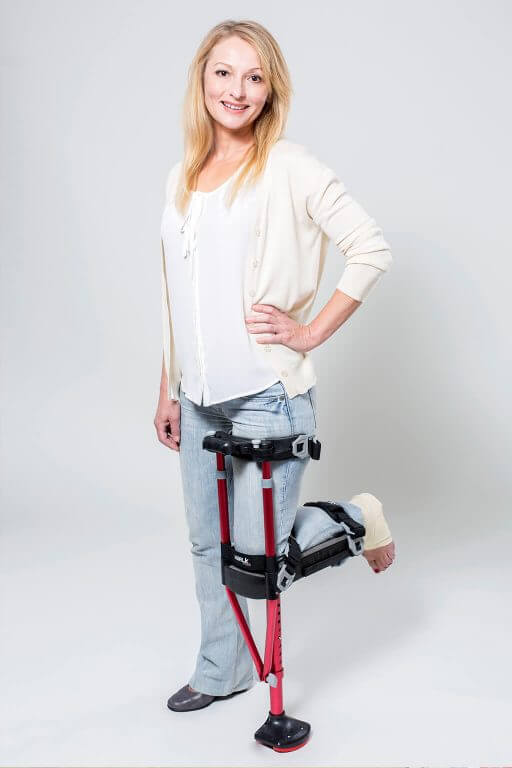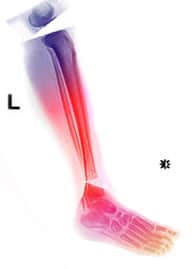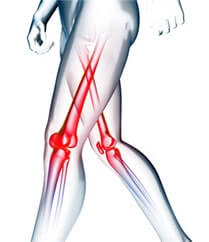Using the iWALK3.0 Hands-free Crutch
For most people, the answer is YES! iWALK3.0 is easy and intuitive. In short, if you can walk, then you can iWALK.
iWALK3.0 works for most people, but not everyone. So here’s a quick test: Before your injury, could you walk unassisted? Could you go up and down stairs without requiring the handrail for balance or support? If yes, then awesome! You are have the physical ability to use the iWALK3.0. Everything else you need is listed below, so scroll down and read the entire listing.

iWALK3.0 is the best crutch alternative for almost everyone – including YOU!

How can I determine if I’m a good candidate for using the iWALK3.0?
While the iWALK3.0 hands free crutch works for most people, it isn’t for everyone. Before you decide to use the iWALK3.0, carefully review the information below to determine if the iWALK3.0 is right for you and suitable for your injury.
Basic Physical Requirements
Regardless of age, if you can pass these two physical ability tests, you should be capable of using the iWALK3.0.
- If you cannot do these things, then iwalk probably will not work for you.
- If you can do these two things, continue and read the rest of this page.

Stair Test

Balance Test
You CAN use iWALK3.0 if

Pre-injury Ability
- You have average strength and balance.
- Pre-injury, you could walk normally without a limp, shuffle, etc.
- Pre-injury, you could go up or down stairs without requiring a handrail for balance or support.

Capacity
- You are between 4’10” (147cm) and 6’6” (198cm) see chart for specific leg length limits.
- You weigh 275 pounds (125kg) or less.
- Maximum thigh circumference (at top of leg) is 28” (71cm) or less.
- You fall within the sizing requirements.

Other Requirements
- Your injury is to one leg only.
- Your injury is below the knee.
- You can bend your injured leg 90 degrees at the knee (casts and boots are OK)
- You have full functionality in your uninjured leg.
You CANNOT use iWALK3.0 if

Compliance
- You plan on trying the iWALK3.0 on your own, without following our FITTING and USE instructions first. HINT – we’ve made it easy for you – so follow our instructions and don’t go it alone.

Pre-injury Ability
- You’re challenged by normal activities like walking, climbing stairs, etc.
- You cannot walk without an assistive device
- You lose your balance
- You must use the handrail to go up or down stairs
- You don’t have full use of your uninjured leg

Capacity
- You weigh over 275 pounds (125 kg) or are significantly overweight.
- Your upper thigh circumference (at the top of your leg) is more than 28” (71cm).
- You do not fall within the sizing guidelines.

Other Requirements
- You cannot bend your injured leg 90 degrees at the knee.

iWALK3.0 works for these common lower leg injuries
Foot fracture, sprained ankle, broken ankle, Achilles tendon rupture, Achilles tendon injuries, bunions, tibia fracture, fibula fracture, Jones fracture, plantar fasciitis, stress fractures (lower leg), below knee amputation, foot and ankle dislocations, foot ulcers, calf muscle tear, calf muscle strain, gastrocnemius tear, almost any lower leg injury is indicated for use with iWALK3.0.
iWALK3.0 does NOT work for these leg injuries
Any injury to the knee or above. So common conditions like ACL tears, MCL tears, patella conditions, other knee injuries, hamstring tears and strains, groin injuries, piriformis injuries, IT band issues, illiopsoas (hip flexor) conditions, diabetic ulcers where proprioception issues adversely affect balance or any other knee or above upper leg injury.


Age Limits
If you’re over 60, pay careful attention – iWALK3.0 might not be for you. The iWALK3.0 has been used successfully by people in their 70’s and beyond, but we’ve also seen people in their early 60’s who couldn’t adapt. What we’ve learned is that as we age mobility capabilities vary greatly from individual to individual, so it’s difficult to put precise age limits on who can use the iWALK3.0. So instead of AGE LIMITS, we’ve found that ABILITY LIMITS work much better. So as long as you keep your expectations reasonable, and follow our ability guidelines, then age alone isn’t a governing factor in whether you can use the iWALK3.0.
ABILITY GUIDELINES- If you could walk with normal gait, unassisted prior to your injury, then you’re likely a good candidate for the iWALK3.0. Further, if you could go up or down stairs quickly, without requiring a handrail for balance or support, then you have the physical ability to succeed on iWALK3.0.
Go to the top of this page and review ALL of the requirements. If you meet them all, then you can be confident in using your iWALK3.0. If not, you should choose a different mobility device.

Plus Size
So if you’re overweight, does that mean you can’t use it? Not necessarily- we’ve seen people of all shapes and sizes use the crutch successfully. Just be aware that people with high body mass indexes may have more difficulty, especially initially, and should set realistic expectations before purchasing the iWALK.
For sizing information, click here.

Diabetics
33Diabetic foot ulcers are often accompanied by Neuropathy, or damage to the peripheral nerves of the foot or feet. This can cause numbness and reduced proprioception, making basic balance difficult. If you have difficulty balancing on your non-affected limb, then you probably will not have success with the iWALk3.0. To find out, try this – If, in addition to the qualifications listed above, you can stand unassisted on only your unaffected foot for 30 seconds, without assistance, then you’re likely capable of using the iWALK3.0. But because of the special circumstances surrounding diabetic induced Neuropathy, we recommend that you check with your physician or therapist prior to using the iWALK3.0. If your diabetic condition resulted in lower leg amputation, see the additional guidelines below.

Amputees
iWALK3.0 is becoming increasingly popular as a daily living aid and a transitory / training device for new below knee amputees. The only special requirements for below knee amputees are that you have a minimum of 4” (10cm) of residual limb and you can tolerate weight on your existing shin. Above knee amputees cannot use the iWALK3.0 without a prosthetic assistive device.
New amputees – iWALK3.0 is used after amputation instead of crutches or a wheelchair. It allows you to maintain muscle strength and train in the use of a prosthetic leg prior to your permanent prosthetic. It also allows you to maintain your lifestyle when you cannot tolerate your prosthetic or it’s being repaired or resized.
Existing amputees – iWALK3.0 excels at providing hands free mobility for those times you don’t want to use your prosthetic leg. You can walk in comfort and stability. You can do many things where you don’t want to expose your expensive permanent prosthetic to water or contaminants. Donning and doffing is faster than for non-amputees because you don’t need to unbuckle the lower straps as your foot will not interfere with slipping directly into the crutch.
See more information regarding how iWALK3.0 is changing mobility for below knee amputees by clicking here.
